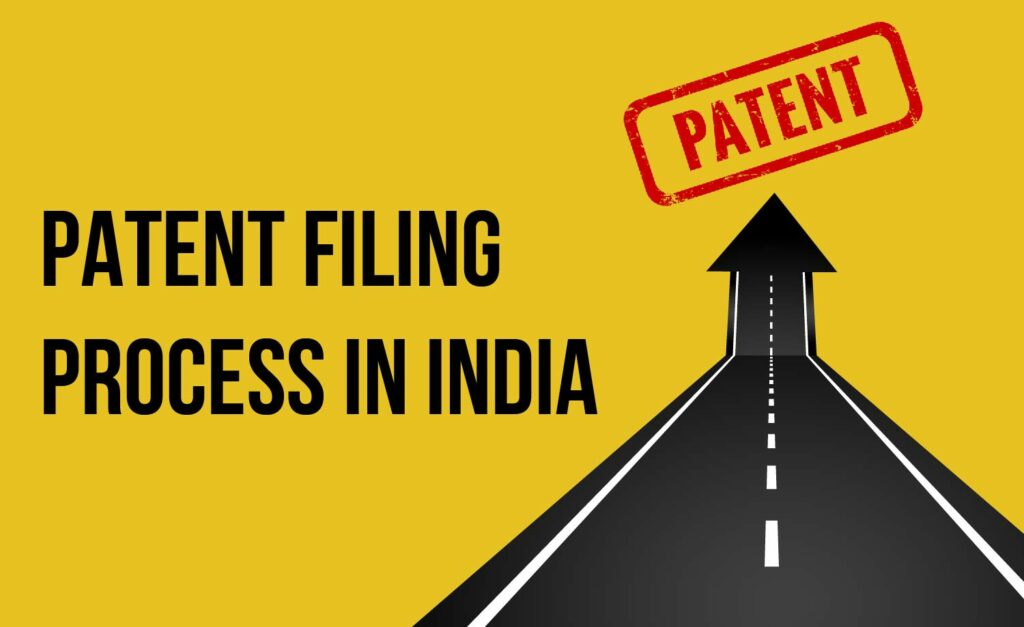PATENT FILING PROCESS IN INDIA

Introduction
Patent is an exclusive right given to an inventor for his novel invention for a restricted time period, in return of disclosing his invention to public and restricting them to use his invention in any manner without his consent. Patent is usually granted for a period of 20 years after which it falls into public realm. Also, patent is a territorial right which implies that the rights related to invention can only be enjoyed in India.
Filing of Patent Application:
To acquire right over an invention, Indian Patent Act, 1970 has established a proper procedure that an applicant needs to follow while applying for registration with regards to his invention. A patent application normally takes 4 to 5 years to get registered. An applicant can file the application either through offline mode or through online mode. An application can be filed either by true and first inventor or his assignee, either alone or jointly with any other person. The step-wise process of filing patent application is elaborated below:
STEP I:
Filing of Patent Application:
Any person who has invented the invention and has the possession of invention can file the application for patent registration in the appropriate patent office as per his territorial jurisdiction. There are mainly four patent offices within Indian Territory which has separated jurisdiction. These offices are at Kolkata, New Delhi, Mumbai and Chennai. An application by inventor can be filed at place where he resides or where the invention has been originated.
To apply for registration, the applicant shall ensure that his invention qualifies the patentability criteria as mentioned in the Patent Act, which are novelty, inventive step and industrial applicability. Further, the invention shall not form the part of section 3 and 4 of the Act.
For an invention where Provisional Application has been filed, within 12 months from the date of priority, the inventor needs to file Complete Application. Failing to this, the application will deemed to be abandoned. Such application shall be accompanied with Form 2.
STEP II:
Publication:
After filing the Complete Application, next step is publication of patent application. Within 18 months from the date of filing or priority application (whichever is earlier), applicant can make the request of publication of his invention by applying Form 9 to the patent office. However, applicant can also request for early publication through Form 9 accompanied with prescribed fees. Patent office, within a period of a month shall publish the application where pre-grant opposition can be filed by general public.
STEP III:
Examination:
The next step in filing of Patent Application after publication is examination. Through Form 18, the applicant shall make the examination request to Patent office within 48 months from date of filing or priority date. However, like publication request, the applicant has been given the option of expedite examination of his application which can be requested by applying Form 18A with prescribed fees.
Once the examination request has been made, the application is examined by the patent office and First Examination Report is issued by the office within next 3 months. An inventor has a period of 6 month from date of issuing of report to submit the reply of the objections raised in the examination report. Failing this will result in abandoning of application. However, this period can be extended if reasonable cause has been mentioned by the application with respect to such delay.
STEP IV:
Registration of Patent.
Where the examiner is satisfied with the reply filed against the FER and all the objection have been settled by the applicant with 6 to 9 months from date of release of Examination report, the Controller shall grant the patent to the applicant.
Moreover, the Controller cannot reject the application without giving the applicant an opportunity to be heard. If applicant fails to convince the Controller through the reply filed and hearing, the application deems to be abandoned.
Conclusion
Patent provides the exclusive rights to inventor which allows him to restrict every other person from misusing his invention with or without his permission. It directly or indirectly contributes to economic development and introduces society to new technologies. Therefore, it is very essential for an inventor to secure his rights over his invention. Further, each and every step of filing patent application has its own significance as laid down under the Indian Patent Act and are required to fulfilled within due time for smooth patent registration.